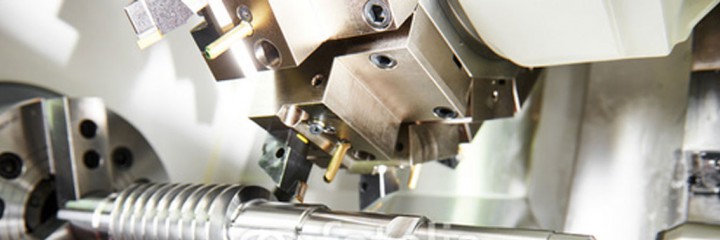TEST2
What is lithium ion post lithium ion batteries
So what is it about the chemistry of the lithium-ion cell that gives it the edge over its competitors? The most common combination is that of lithium cobalt oxide (cathode) and graphite (anode), which is most commonly found in portable electronic devices such as cellphones and laptops. As the name suggests, lithium ions (Li+) are involved in the reactions driving the battery. Goodenough, after testing a range of alternative materials, replaced TiS2 with lithium cobalt oxide (LiCoO2, or LCO), which has a similar layered structure but offers a higher voltage and is much more stable in air. The pyrometallurgical method uses a high-temperature furnace to reduce the components of the metal oxides in the battery to an alloy of Co, Cu, Fe, and Ni. It forms on both the anode and cathode (termed a CEI) and influences many performance parameters. Lithium nickel manganese cobalt (NMC) oxide positives with graphite negatives have a 3.7 V nominal voltage with a 4.2 V maximum while charging. Our absolute best battery friend these days is the lithium-ion battery. Treptow, R. S. (2003). Lithium Batteries: A Practical Application of Chemical Principles. When manufacturers make lithium-ion batteries, they have to take certain precautions so that the batteries are safe to use. In particular, Hong Li et al.[117] showed in 2000 that the electrochemical insertion of lithium ions in silicon nanoparticles and silicon nanowires leads to the formation of an amorphous Li-Si alloy. Dans les accidents automobiles, les incendies de batterie au lithium peuvent être longs à éteindre. This combined process not only lets you get out and about sooner, it also extends the lifespan of your battery. There, web de gelöschte mails wiederherstellen cobalt oxide combines with lithium ions to form lithium-cobalt oxide (LiCoO2). As you learned, lithium is extremely reactive. CEI’s focus includes both high-level materials science, such as the development and substitution of alternative materials into the Li-ion battery, as well as characterization and design of nano-structured materials, or materials whose properties are determined even at nano-scale precision. The battery will probably be useless afterwards, so this is something to avoid. Polymer electrolytes are promising for minimizing the dendrite formation of lithium. These features are required because the negative electrode produces heat during use, while the positive electrode may produce oxygen. To avoid this confusion, researchers sometimes use cumulative discharge[154] defined as the total amount of charge (Ah) delivered by the battery during its entire life or equivalent full cycles,[155] which represents the summation of the partial cycles as fractions of a full charge-discharge cycle. These cracks expose the Si surface to an electrolyte, causing decomposition and the formation of a solid electrolyte interphase (SEI) on the new Si surface (crumpled graphene encapsulated Si nanoparticles). HF converts the rigid SEI film into a fragile one. During charging these reactions and transports go in the opposite direction: electrons move from the positive electrode to the negative electrode through the external circuit. En 2007 le coût d'un accumulateur LFP est de plus de 1 000 €/kWh et doit être abaissé sous 500 €/kWh pour atteindre ce marché. So the question is, furosemide 20 mg what makes these batteries so energetic and so popular?
Lithium aa akku
The cobalt electrode reaction is only reversible for x < 0.5 (x in mole units), limiting the depth of discharge allowable. In part because of lithium’s small size (third only to hydrogen and helium), Li-ion batteries are capable of having a very high voltage and charge storage per unit mass and unit volume. There, they are deposited. The electrons, on the other hand, move from the anode to the cathode. Under typical conditions, the equilibrium lies far to the left. Li-ion batteries also have low self-discharge rate of around 1.5-2% per month. As graphite is limited to a maximum capacity of 372 mAh/g[40] much research has been dedicated to the development of materials that exhibit higher theoretical capacities, and overcoming the technical challenges that presently encumber their implementation. If the battery ever gets so hot that it risks exploding from over-pressure, this vent will release the extra pressure. However, bmw e36 kotflügel operation outside typical parameters can degrade the electrochemical interfaces via several reactions.[164] Lithium-ion batteries are prone to capacity fading over hundreds[165] to thousands of cycles. This is a bit more than the heat of combustion of gasoline but does not consider the other materials that go into a lithium battery and that make lithium batteries many times heavier per unit of energy. Each gram of lithium represents Faraday's constant/6.941, or 13,901 coulombs. En Allemagne, le 5 mai 2009, l'Université technique de Freiberg a lancé une initiative Lithium-Initiative Freiberg associant cinq universités et des partenaires industriels dans un pôle de compétence concernant les batteries lithium-ion plus sûres et efficientes pour l'industrie automobile. Lithium-ion batteries power the lives of millions of people each day. Now You Know video (5:10 min.) discussing the materials used in EV (electric vehicle) batteries and the mathematics behind electric vehicle adoption. High temperatures during charging may lead to battery degradation and charging at temperatures above 45 °C will degrade battery performance, whereas at lower temperatures the internal resistance of the battery may increase, resulting in slower charging and thus longer charging times.[75][better source needed] Consumer-grade lithium-ion batteries should not be charged at temperatures below 0 °C (32 °F). This means they can give you a ton of energy without being very heavy. The electrical current then flows from the current collector through a device being powered (cell phone, computer, etc.) to the negative current collector. Lithium-ion batteries have also been in the news lately. In the case where the battery is relatively healthy, direct recycling can cheaply restore its properties. Li-ion batteries have a tendency to overheat, and can be damaged at high voltages. Another large component of CEI research involves the development of novel materials to improve battery performance. As you’ve learned, intercalation materials are used as electrodes in lithium-ion batteries instead of actual lithium metal. Since this cycle can be repeated hundreds of times, this type of battery is rechargeable. The cell's energy is equal to the voltage times the charge. It is important to note that fires are very rare. Such batteries are widely used for electric tools, medical equipment, and other roles. Lithium-ion batteries can be a safety hazard since they contain a flammable electrolyte and may become pressurized if they become damaged. As the battery is charged, an oxidation reaction occurs at the cathode, meaning that it loses some negatively charged electrons.
What is panax ginseng
During charging, an external electrical power source (the charging circuit) applies an over-voltage (a higher voltage than the battery produces, of the same polarity), forcing a charging current to flow within each cell from the positive to the negative electrode, i.e., in the reverse direction of a discharge current under normal conditions. How do they burst into flame? And is there anything you can do to prevent the problem or help your batteries last longer? If the cells ever become completely discharged, the battery pack will shut down because the cells are ruined. When the battery is charging, the lithium ions flow from the cathode to the anode, antihistamine tablets loratadine and the electrons move from the anode to the cathode. Lithium-ion batteries were first manufactured and produced by SONY in 1991. If overheated or overcharged, Li-ion batteries may suffer thermal runaway and cell rupture.[189][190] In extreme cases this can lead to leakage, explosion or fire. C'est également grâce à cette technologie que, le 7 avril 2010[7], le Solar Impulse, golf 3 cabrio kotflügel un prototype d'avion solaire suisse, a effectué avec succès son premier vol. Recent advances in battery technology involve using a solid as the electrolyte material. The amount of time it takes to reach that first 80% will vary depending on your settings and which device you’re charging. Woodford, C. (2018, August 3). Lithium-ion batteries. It could take several days to complete a cycle. Research has been under way in the area of non-flammable electrolytes as a pathway to increased safety based on the flammability and volatility of the organic solvents used in the typical electrolyte. Li-ion battery elements including iron, copper, nickel and cobalt are considered safe for incinerators and landfills.[212][citation needed] These metals can be recycled,[213][214] usually by burning away the other materials,[215] but mining generally remains cheaper than recycling;[216] recycling may cost $3/kg,[217] and in 2019 less than 5% of lithium ion batteries were being recycled.[218] Since 2018, the recycling yield was increased significantly, and recovering lithium, manganese, aluminum, the organic solvents of the electrolyte, and graphite is possible at industrial scales.[219] The most expensive metal involved in the construction of the cell is cobalt. Copyright 2022, Let’s Talk Science, All Rights Reserved. Li-ion batteries are also subject to aging, meaning that they can lose capacity and frequently fail after a number of years.
Is kamagra legal in uk
These early attempts to develop rechargeable Li-ion batteries used lithium metal anodes, which were ultimately abandoned due to safety concerns, as lithium metal is unstable and prone to dendrite formation, which can cause short-circuiting. Some chargers accomplish the balance by charging each cell independently. During the constant voltage phase, the charger applies a voltage equal to the maximum cell voltage times the number of cells in series to the battery, as the current gradually declines towards 0, until the current is below a set threshold of about 3% of initial constant charge current. That is not to say that lithium-ion batteries are flawless. L'accumulateur Li-ion polymère utilise un principe de fonctionnement semblable aux accumulateurs Li-ion et a des caractéristiques proches.






